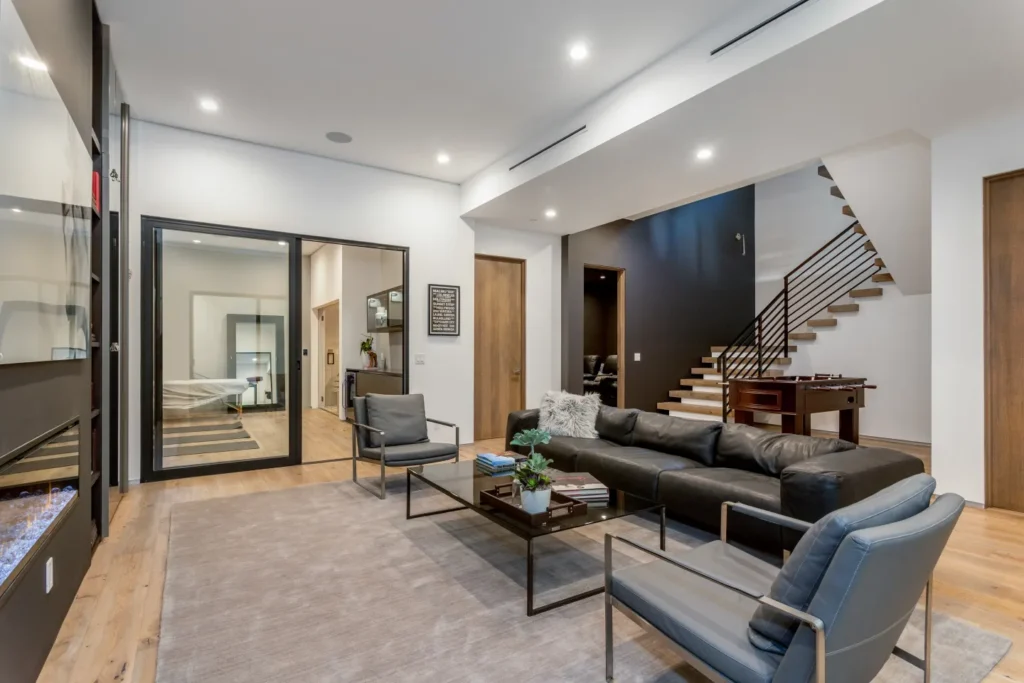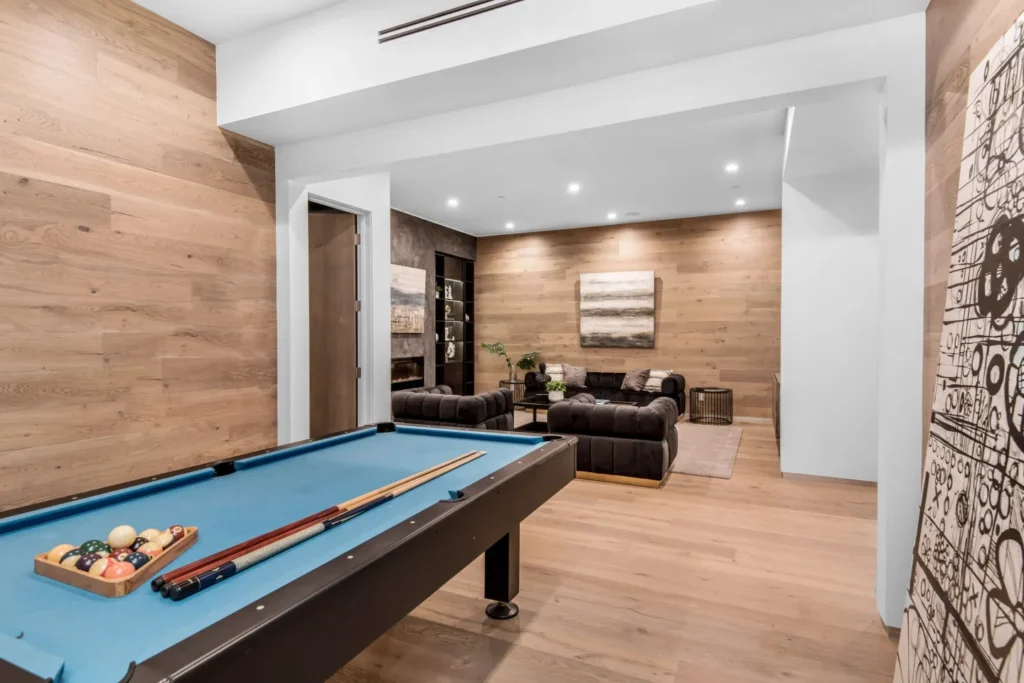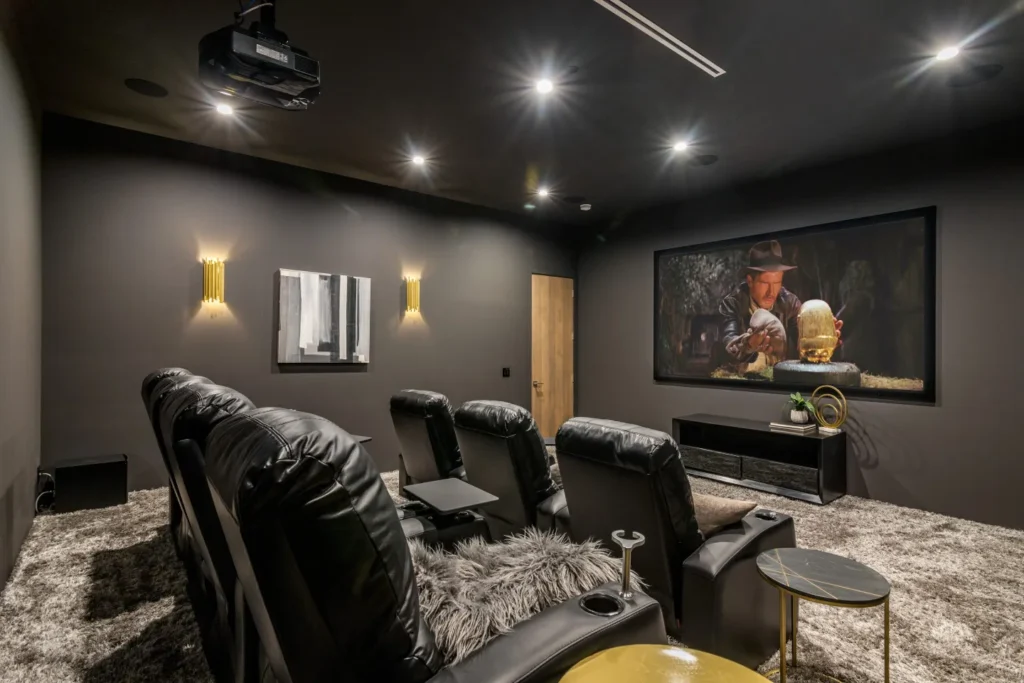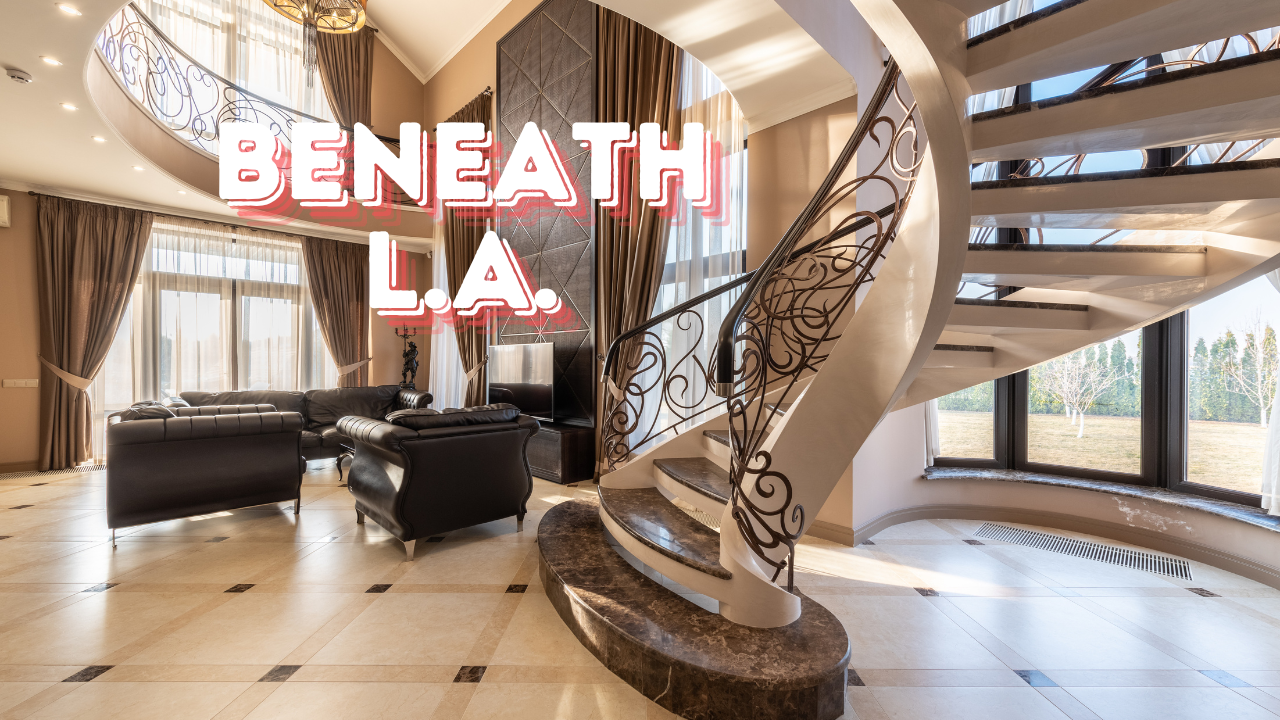In Southern California, where the cost of real estate is staggering, owning a home is already an unattainable dream for many. But for the ultra-wealthy, it’s not just about owning a home with breathtaking vistas or sprawling mansions—they’re taking it to the next level by creating extraordinary underground spaces that rival the luxury of the homes above them.
These subterranean sanctuaries, often referred to as “iceberg homes,” are designed with the idea that what you see above ground is just a small part of the whole picture. Like an iceberg, the majority of the living space is hidden below the surface, out of sight, and out of reach for most people. These underground levels are anything but ordinary basements.
They’re filled with a variety of luxurious amenities that could include wine cellars, home theaters, gyms, spas, and even more extravagant features such as secret rooms or spaces designed for privacy and intimacy. Some even include natural light wells and skylights to bring in the California sunshine, making these underground spaces feel as light and airy as the rooms above ground.
The concept of iceberg homes isn’t new. It has been popular among the elite in London for years, where building upward or outward is often restricted by zoning laws. About five years ago, San Francisco Magazine reported that homeowners in affluent, space-constrained neighborhoods like Palo Alto were also going underground, turning their basements into the hottest areas of their homes. Now, this trend has firmly taken root in Los Angeles, where it’s not just about zoning but also about preserving the stunning views that make the area so desirable in the first place.
Interestingly, in Los Angeles, no one refers to these lavish underground spaces as iceberg homes. They also shy away from calling them basements, as that term is considered too lowbrow for the luxury market. Instead, these spaces are often referred to as “lower levels,” a term that better reflects the opulence and sophistication that these spaces represent. Ernie Carswell, a luxury real estate agent based in Beverly Hills, notes that while The Wall Street Journal has dubbed them “McBasements,” it remains to be seen whether this term will catch on with the SoCal elite.

These lower levels don’t give off the typical damp, basement vibes. Instead, they’re cooler, more refined, and they exemplify the kind of luxury that Los Angeles is known for. In neighborhoods where multi-million-dollar homes line the streets, it’s become almost a status symbol to have a lavish lower level.
Some of these spaces house billiard rooms and wine caves; others feature bowling alleys, movie theaters, gyms, saunas, bars, and even bedrooms, provided there’s enough natural light filtering in. Carswell likens some of these underground spaces to something straight out of a “James Bond” movie, complete with secret doors, hidden rooms, and spiral staircases leading to emergency bunkers. It’s all part of the appeal for the ultra-rich, who want their homes to be as exclusive and luxurious as possible.
The cost of building these lavish lower levels is as steep as you might imagine. Andrew Vaitkevicius, the sales and acquisitions manager for Arzuman Brothers, a luxury homebuilder, estimates that creating a 2,000-square-foot lower level can easily cost around $1.5 million.
However, the price can quickly escalate, with some basements costing in the double-digit millions, depending on the complexity and the level of luxury involved. Chris Pozil, a senior project manager for McClean Design, a contemporary residential design firm, explains that the high cost is due to the extensive work involved in excavating, reinforcing, and finishing these underground spaces.
Vaitkevicius describes these basements as almost like a “second house,” and they’ve become prevalent in affluent Los Angeles neighborhoods such as Bel Air, Beverly Hills, the Sunset Strip, Malibu, Pacific Palisades, and Toluca Lake. In these areas, the sky’s the limit when it comes to real estate prices, so it makes financial sense to add as much living space as possible, even if it’s underground. Vaitkevicius cites two homes his company developed in Toluca Lake, a small but affluent neighborhood in Los Angeles, as prime examples. Both homes sold for nearly $5 million and featured luxurious basements.

One was a nearly 5,400-square-foot house with eight bedrooms and five bathrooms, with a basement that included high ceilings, a bedroom, a bathroom, a movie theater with black leather reclining seats, and a pool table. The other, a 6,700-square-foot house with five bedrooms and six bathrooms, also had a movie theater in the basement, along with a health and wellness center complete with a sauna and massage table. This home was sold to a Hollywood producer, who reportedly uses the space to host private premieres.
In many of the homes designed by Pozil’s firm, the basements are nearly half the size of the entire house. They’ve built basements with nightclubs larger than some of the city’s hottest spots, tennis and basketball courts, hidden sex rooms, and secret doors leading to emergency bunkers. If a home is situated on a steep hillside, the basement can be designed to extend down the slope, creating a multistory lower level that, from the street, looks like a modest one- or two-story home but, when viewed from above, reveals its true size.
The motivation behind building these iceberg homes in Los Angeles seems to have less to do with evading zoning laws and more to do with preserving the stunning views that make these homes so valuable. Vaitkevicius and Pozil both acknowledge that there are limits to how large a house can be in the city, but in neighborhoods where the view is everything, homeowners are more concerned with keeping their homes from blocking the views of their neighbors than with maximizing their above-ground square footage.
Excavating and building these luxurious lower levels is no small feat. It involves removing vast amounts of dirt—sometimes as much as 200 truckloads, according to Vaitkevicius—and reinforcing the earth with steel posts and concrete. It’s a time-consuming and expensive process, but it’s one that can significantly increase the value of a home, which is something everyone loves.

Still, even with the extravagant underground spaces, there are limits to how much can be built below ground. In Carswell’s neighborhood, where he serves as the president of the homeowners association, lower levels cannot be larger than the above-ground portion of the house. Even then, they’re usually trimmed down a bit to stay within the guidelines.
The trend of building these opulent lower levels really took off after the Great Financial Crisis when developers returned to the city. These spaces became increasingly glamorous, evolving from the simple “California basements” of the past—little more than spaces for hot water heaters, electrical panels, and storage—into the luxurious and braggadocious lower levels of today. Carswell notes that many of his affluent clients now have these spaces on their checklist when shopping for a new home.
For Vaitkevicius, the surge in demand for these lower levels began during the pandemic when people started looking at their homes differently. With so much time spent indoors, homeowners wanted to create spaces where they could have everything they needed without ever having to leave the house. “They want to have everything in the home,” Vaitkevicius says, “so you can have your own compound without needing to go out.”
But it’s not just about grandeur and luxury. Typical neighborhoods can have lower levels too, though they’re usually more modest, with one or two bedrooms rather than the sprawling, amenity-filled spaces found in the homes of L.A.’s elite. These more modest lower levels are still desirable, offering extra living space in a region where every square foot is valuable.
In the end, whether it’s called an iceberg home, a lower level, or simply a basement, these subterranean spaces represent the pinnacle of luxury living in Los Angeles. For the ultra-wealthy, it’s not enough to have a mansion with stunning views—they need to have it all, including hidden sanctuaries beneath the surface where they can retreat from the world in style.
Source: Fortune












